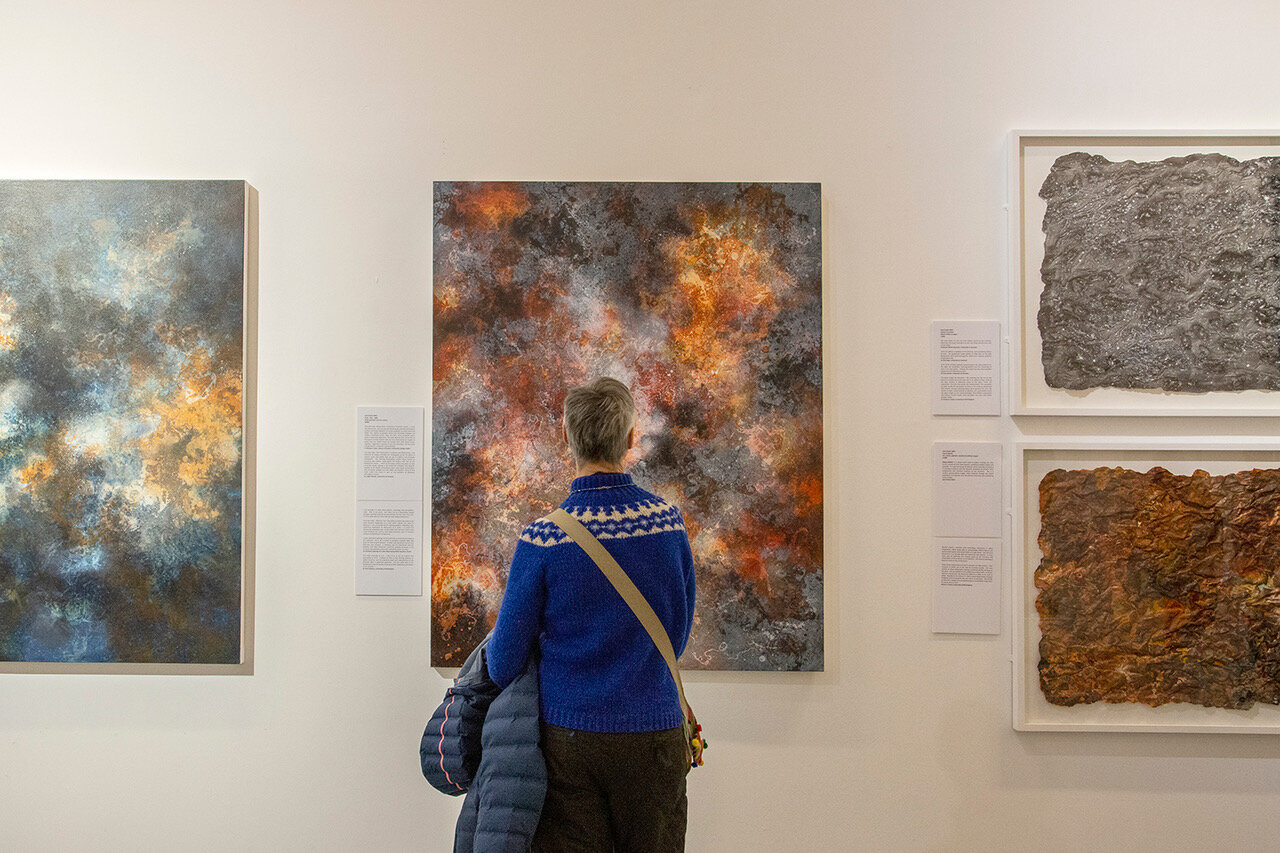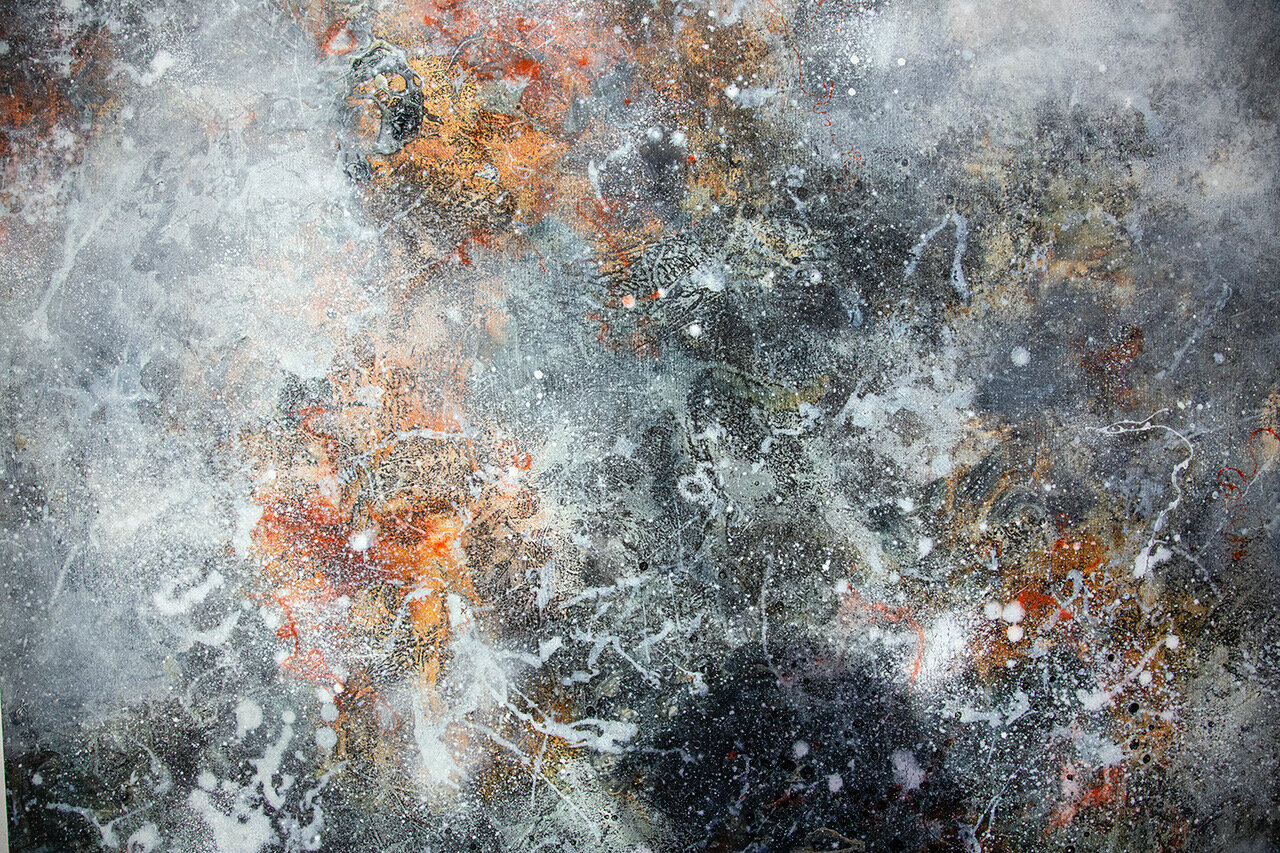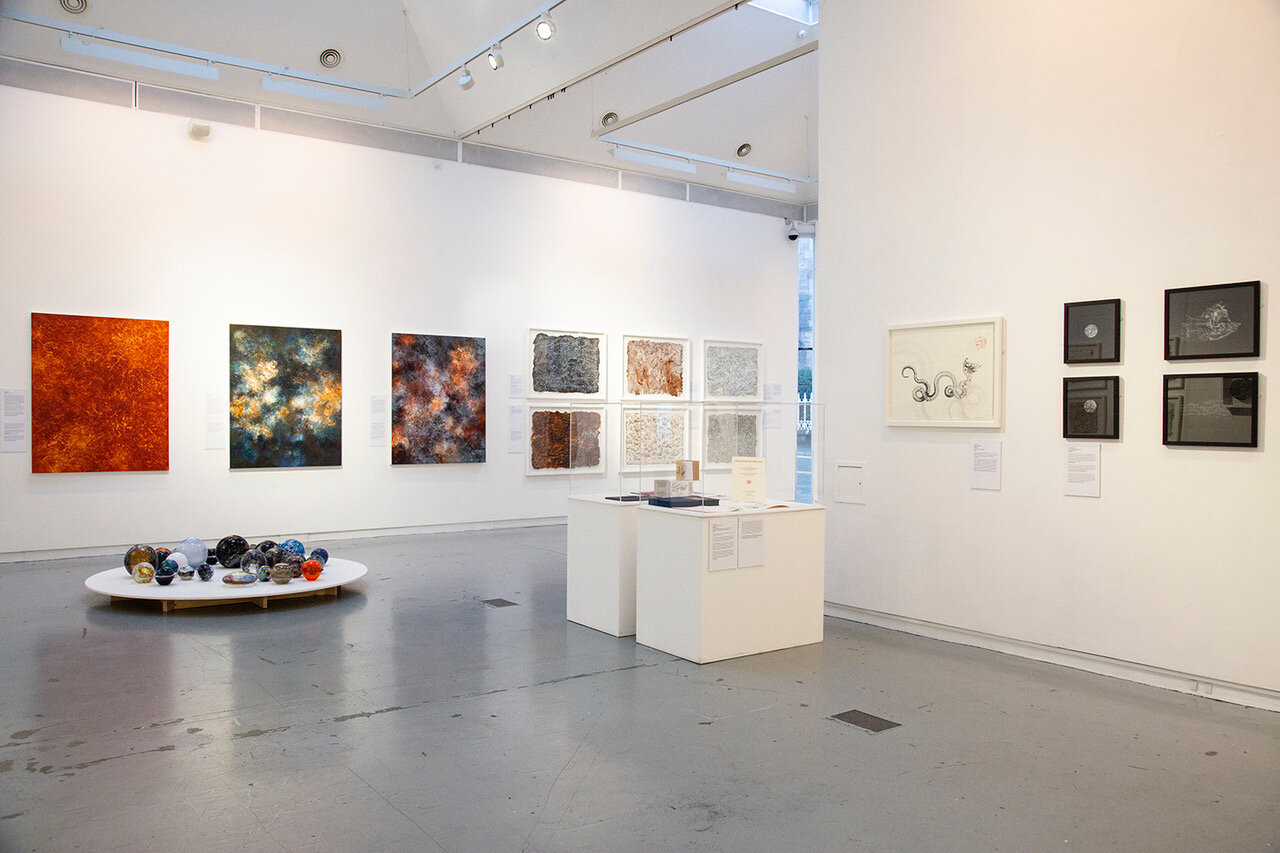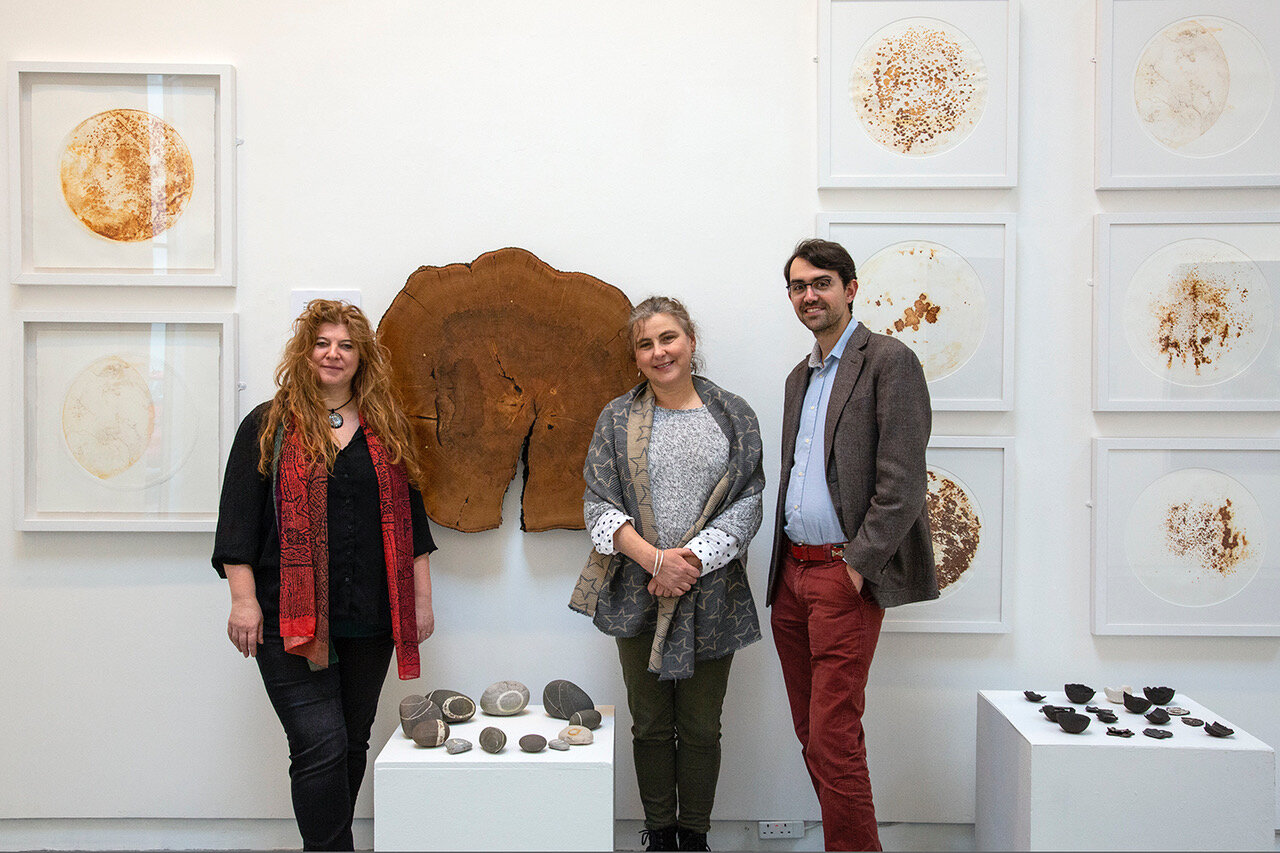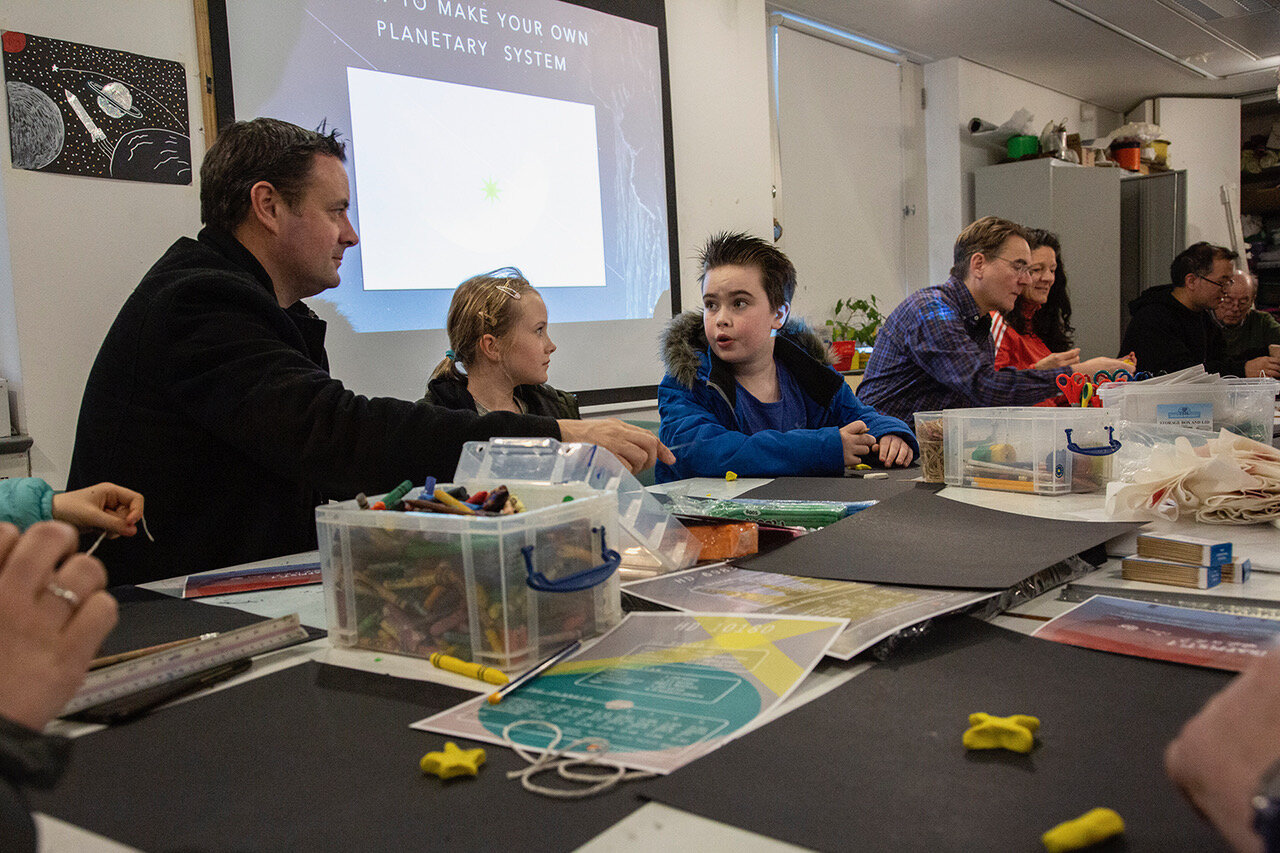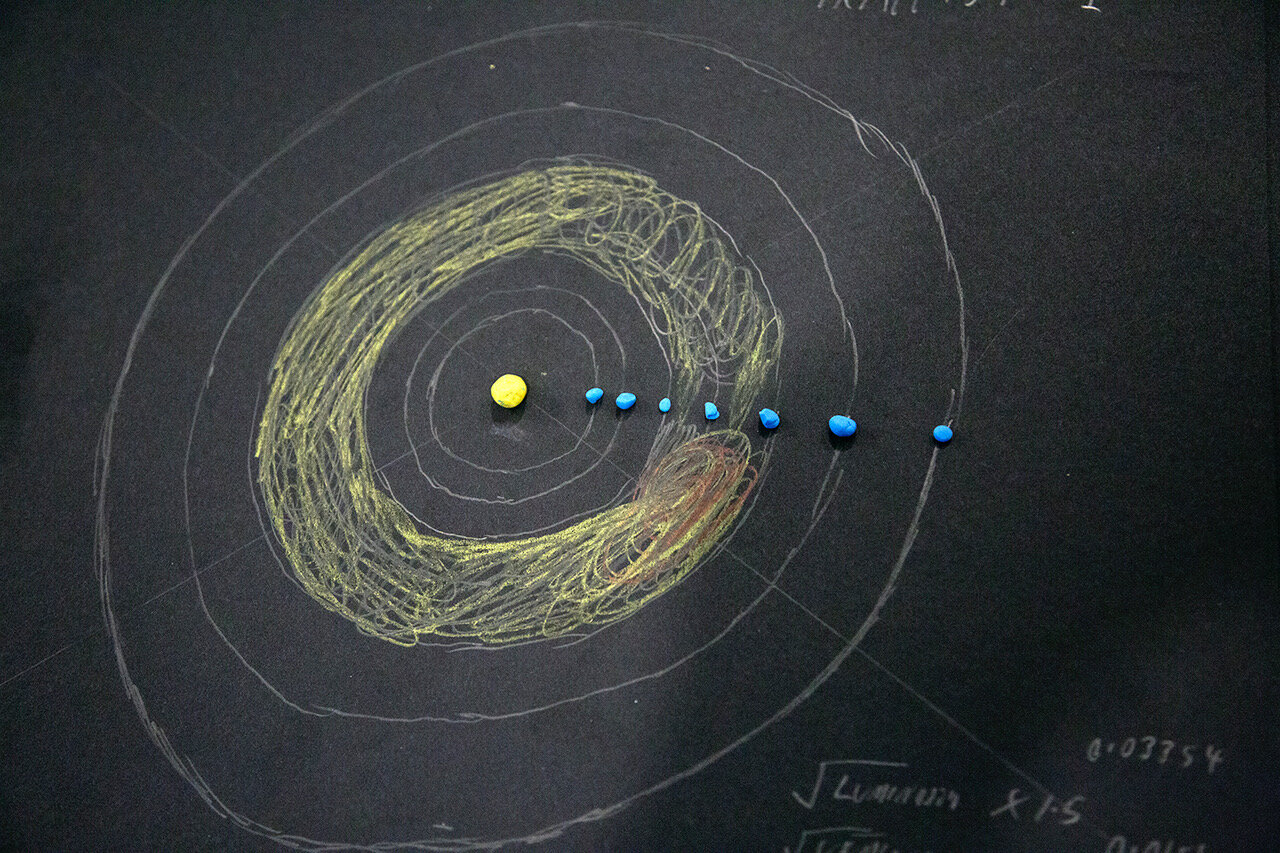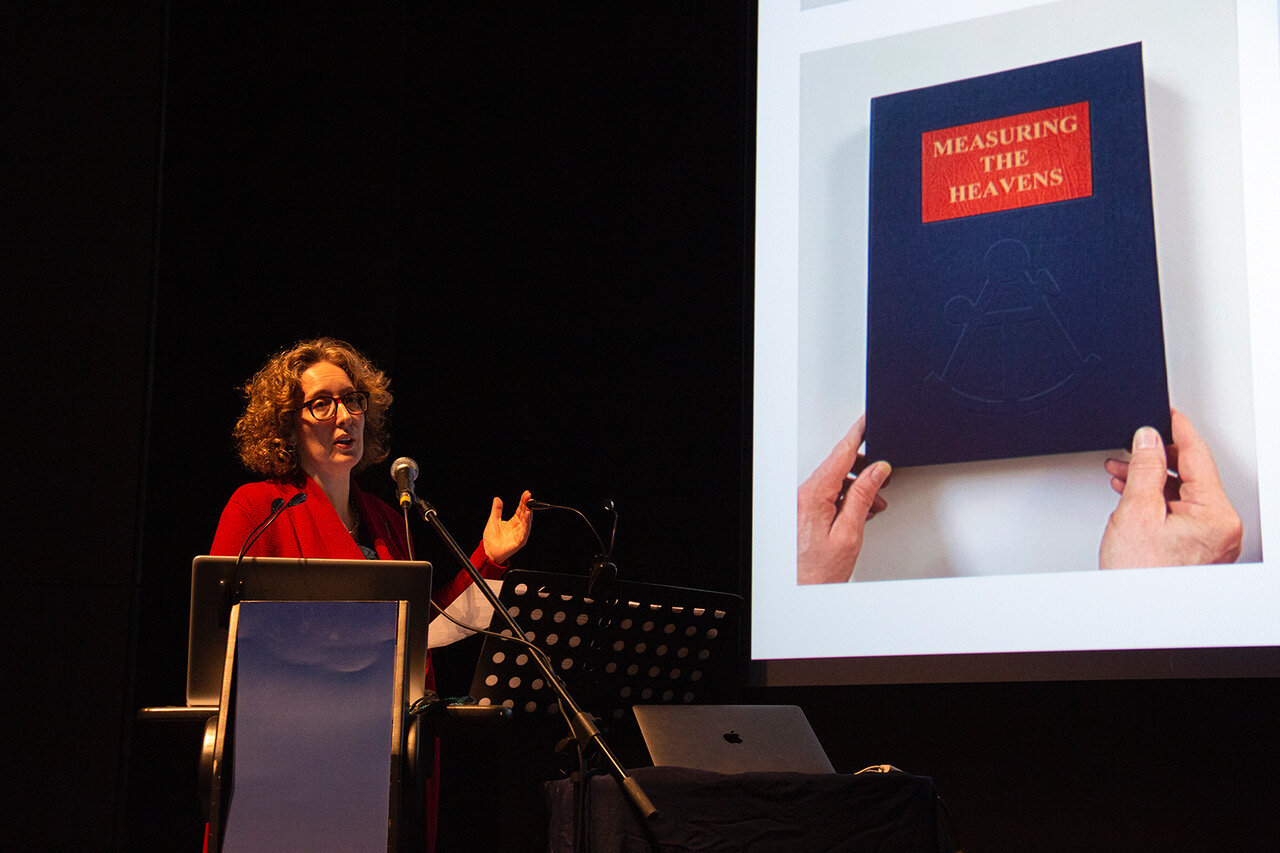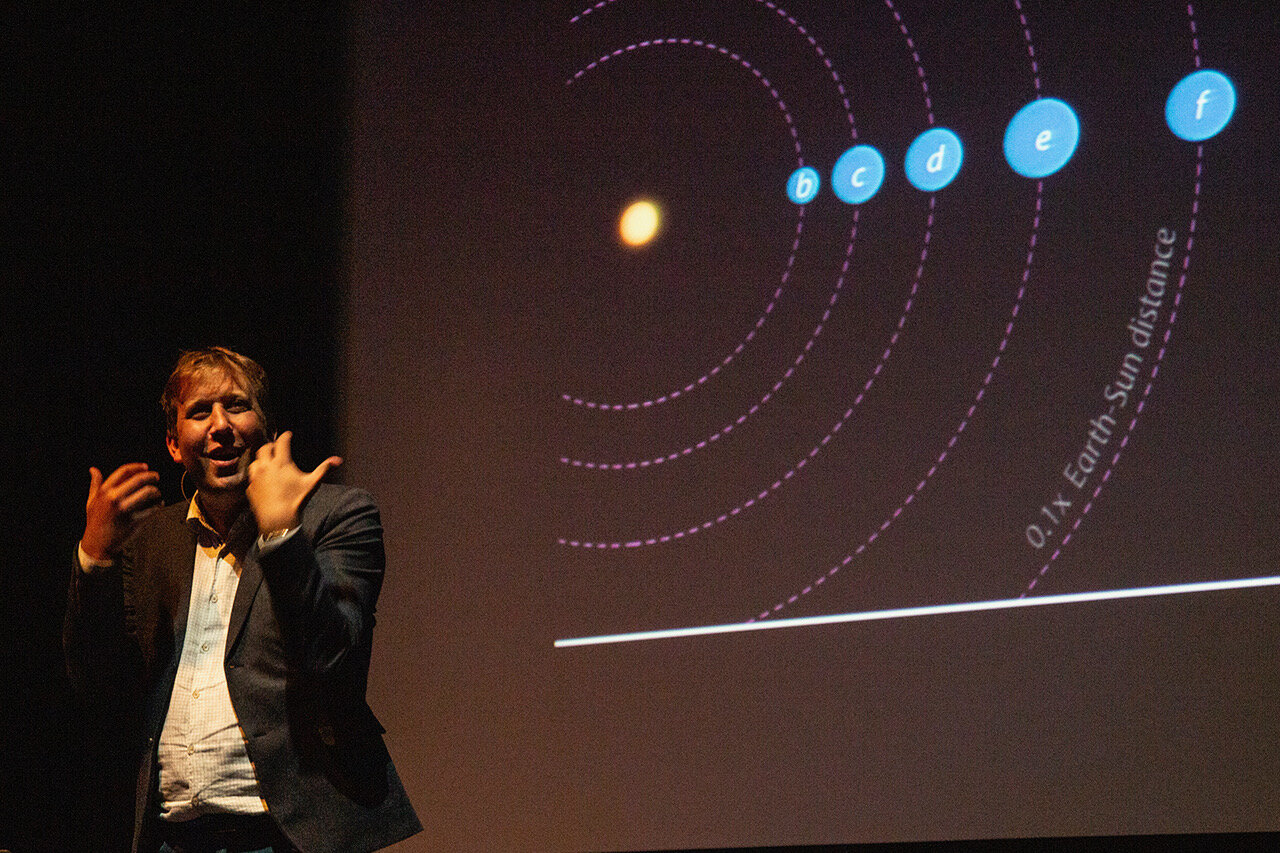Dark Skies Festival
7-22 February 2020
The 2020 Hebridean Dark Skies festival brought together art and science in ambitious and surprising ways. With a programme spanning theatre, live music, film, visual art, food, astronomy talks, stargazing and a ‘visual moonbounce’ event with artist Daniela de Paulis, during which images were sent by radio waves to the moon and back. The annual festival organized by AnLanntair arts centre and held across the Island of Lewis, is an interactive meeting of international artists, astronomers and audiences.
On the festivals opening weekend Astronomer Dr Amuary Triaud of the University of Birmingham and contemporary artists, Gillian McFarland SSA and Ione Parkin RWA, gave talks on their collaboration, individual and collective inspiration. They spoke about parallels of process between artists and scientists – an excitement about uncertainty, ambiguity and anomaly – a desire not just to observe but to look beyond and respond.
Amaury also led the interactive workshop Exploring Exoplanets. Participants learned about exoplanet systems, which provide the most promising physical conditions to support life among all the planets we know of beyond our Solar system. They learnt how to get involved in hunting exoplanets online, before mapping the formation of our solar system through playdoh, paper and pen.
Attendees said:
“It was inspiring meeting someone who has discovered planets and how patient scientific methods make that possible.”
“Amaury has the capacity to present complex ideas in such a fascinating digestible way. We were drawn by the art but are now curious to learn more about the science.”
The festivals central exhibition ‘Creativity and Curiosity’, featured the work of Gillian McFarland and Ione Parkin, created in dialogue with astrophysicists, cosmologists and planetary geologists. This artist-led project explores the nature of interdisciplinarity within the practice of visual thinking.
Gillian collaborates with Graeme Hawes, producing multiple ‘space globes’ that embody ideas of extremes of heat, rotation, gravity, expansion and collapse. Her prints echo surface impacts and her punctured paper works explore orbit tracking across otherwise untouched space. This theme is further developed in the Flat Field’s collaboration with Amaury Triaud. She also is part of a collaborative conversation with artist Collette Rayner who has produced a hand-drawn animation for the project.
Ione’s large-scale paintings express her fascination about the early formation of the universe; massive clouds of cosmic dust and gas; vast webs of colour and shimmering light; solar dynamics; luminous visions of immensity. The exhibition featured her richly textured mixed-media works on paper inspired by planetary surfaces, extremes of temperature and geological process. These resemble samples of the undiscovered terrain of distant moons.
The exhibition also featured the work of Kate Bernstein, contemporary book artist and printmaker. Bernstein was invited by the C&C project to collaborate with Research Visits to the Library of the Royal Astronomical Society in London.
Responses from collaborating astronomers were shown next to the individual artworks, revealing insights into the art-science dialogue. The artists express a lateral, not literal, response to the scientific research – a physical, tactile experience rather than an explanation.
Audiences enjoyed physically seeing science take form in artworks. Putting space into relative and human context through varied materials, and observing the different meanings and connections created in the process.
Visitors said:
“Here the art reflects the endless possibilities of Astronomy.”
“It was great to hear scientists interpreting the artworks and artist’s interpreting the science.”
“I enjoyed seeing the tangible inspiration of scientists who deal with bigger than ordinary questions.”
“Learning the human element in the science, the history of astronomical discoveries, myths and folklores, brought it to life.”

